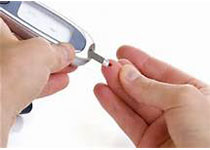卵巢内注射PRP会增加卵巢低反应妇女的卵巢反应性吗?
2023-10-27 生殖医学论坛 生殖医学论坛 发表于上海
卵巢内注射富含血小板血浆(PRP)是否会增加接受体外受精治疗的卵巢低反应(POR)妇女的卵巢反应性?
欧洲人类生殖与胚胎学学会(ESHRE)年会是生殖医学领域规模最大、最具影响力的年度国际学术会议之一,覆盖生殖医学领域所有专业。2023年ESHRE年会已经召开,生殖医学论坛精选了众多会议精华内容进行了翻译,希望给大家带来最新鲜、最前沿的生殖医学资讯。
Study question
研究问题
Does intraovarian administration of platelet rich-plasma (PRP) increase ovarian response in women with poor ovarian response (POR) undergoing IVF treatment?
卵巢内注射富含血小板血浆(PRP)是否会增加接受体外受精治疗的卵巢低反应(POR)妇女的卵巢反应性?
Summary answer
摘要答案
In patients with low ovarian response, the number of oocytes and embryos is higher in the 4 cycles after PRP administration compared to pre-PRP cycles.
在卵巢低反应的患者中,与PRP治理前的周期相比,PRP给药后4个周期的卵母细胞和胚胎数量更高。
What is known already
目前已知道
The number of oocytes after controlled ovarian stimulation is a crucial factor in IVF outcomes. For this reason, different approaches have been investigated for the management of patients with POR, such as the administration of adjuvant treatments, or the change of protocol, dose or type of gonadotropin. However, none of these strategies has proven to be fully effective in improving oocyte yield.
More recently, innovative treatments aimed at activating preantral follicles have emerged, such as intraovarian administration of autologous platelet rich plasma (PRP). Although the evidence is still limited, some studies suggest an improvement in ovarian response following PRP treatment.
控制卵巢刺激后的卵母细胞数量是体外受精结果的关键因素。出于这个原因,已经研究了管理POR患者的不同方法,例如给予辅助治疗,或改变促性腺激素的方案、剂量或类型。然而,这些策略都没有被证明在提高卵母细胞数量方面完全有效。
最近,出现了旨在激活窦前卵泡的创新治疗方法,例如卵巢内给药富含自体血小板的血浆(PRP)。虽然证据仍然有限,但一些研究表明,PRP治疗后卵巢反应有所改善。
Study design, size, duration
研究设计、规模、持续时间
Retrospective study of 83 patients diagnosed with low ovarian reserve according to Bologna criteria who underwent intraovarian PRP between July 2021 and December 2022. 111 stimulation cycles after PRP were compared with the cycles immediately prior to PRP administration.
对根据博洛尼亚标准诊断为卵巢低储备的83名患者进行回顾性研究,这些患者在2021年7月至2022年12月期间接受了卵巢内注射PRP的治疗。将PRP后的111个刺激周期与PRP给药前的周期进行了比较。
Participants/materials, setting, methods
参与者/材料、环境、方法
Patients with POR were presented with an oocyte or embryo preservation strategy, which included the option of administering intraovarian platelet-rich plasma (PRP) either during the initial oocyte retrieval or in the follicular phase of the cycle preceding stimulation. A 2 ml dose of PRP was administered into each ovary. The ovarian response was analyzed in terms of the number of oocytes, MII, and embryos, and was further evaluated based on different age groups.
POR患者接受了卵母细胞或胚胎保存策略,其中包括在治疗后首个周期的取卵前,或者卵泡期使用PRP。具体方法为,每个卵巢注射2毫升剂量的PRP。根据卵母细胞、MII和胚胎的数量对卵巢反应进行了分析,并根据不同的年龄组进行了进一步评估。
Main results and the role of chance
主要结果和偶然性的作用
83 women (age: 38,68 ± 3,54, range 28-46 years) underwent a PRP injection. The patients had low ovarian reserve markers (AMH 2,90 ± 2,76 pmol/l, AFC 4,74 ± 2,70).
Of the cycles after PRP, 48 were performed in the luteal phase of the same cycle, 28 in the follicular phase of the first post-PRP cycle and 35 between the 2nd and 4th cycle post PRP.
The overall mean number of oocytes (2,38 ± 2,09 vs. 3,19 ± 2,70; p = 0,002) and MII (1.84 ± 1.77 vs. 2.54 ± 2.25, p = 0.0008) was significantly higher after PRP. There was also a statistically significant difference in the number of blastocysts pre and post PRP (0,85 ± 1,12 vs. 1,77 ± 1,89; p = 0,0005). There were no differences in the blastulation or euploidy rates.
Differences in the number of oocytes were not observed in the luteal phase cycle (2.97 ± 2.35 vs. 3.45 ± 2.66, p = 0.2) compared to the subsequent 1st-4th cycles (1.88 ± 1.77 vs. 2.95 ± 2.73, p = 0.003).
Improvement in response was observed in patients younger than 40 years (2 ± 1.52 vs 3.3 ± 2.62 oocytes; p = 0.0002), but not in patients aged ≥ 40 years (2.9 ± 2.58 vs 3.02 ± 2.77 oocytes; p = 0.7).
83名女性(年龄:38.6±3.54,范围28-46岁)接受了PRP注射。患者卵巢储备标志物水平降低(AMH 2.90±2.76 pmol/l,AFC 4.74±2.70)。
在PRP治疗患者中,48个在同一周期的黄体期进行,28个在第一个PRP后周期的卵泡期,35个介于PRP后第2和第4个周期之间。
在PRP之后,卵母细胞的总数(2.38±2.09 vs. 3.19±2.70; p=0.002)和MII(1.84±1.77 vs. 2.54±2.25, p=0.0008)明显升高。PRP前后的囊胚数也显著升高,且有统计学差异(0.85±1.12 vs. 1.77±1.89; p=0.0005)。囊胚形成率或整倍体率没有差异。
与随后的第1-4周期(1.88 ± 1.77 vs.95 ± 2.73,p.0.003)相比,黄体期(2.97±2.35 vs.3.45± 2.66,p=0.2)中没有观察到卵母细胞数量的差异。
40岁以下的患者的反应有所改善(卵母细胞数:2±1.52与3.3±2.62;p=0.0002),但在40岁及以上年龄的患者中没有观察到益处(卵母细胞数:2.9±2.58与3.02±2.77;p=0.7)。
Limitations, reasons for caution
局限性,注意事项
The retrospective nature of the study is a significant limitation. As this research is based on real-world clinical practice, the patientś stimulation protocols were diverse which may have impacted the results. To verify our findings, further studies with a uniform control group are required.
研究受限于回顾性研究设计。由于这项研究基于现实世界的临床实践,患者刺激方案的多样性,这可能影响了结果。为了验证我们的发现,还需要均一的对照组进行进一步研究。
Wider implications of the findings
研究结果的更广泛意义
We observed improved response to intraovarian platelet-rich plasma administration in patients with POR under 40 years of age. This enhancement was observed from the initial follicular cycle following administration. Our findings suggest that intraovarian PRP may be a valuable supplementary treatment for this patient population.
我们观察到40岁以下POR患者对卵巢内注射PRP后,卵巢反应有所改善,且此种改善效果体现在PRP治疗后卵巢刺激周期的卵泡期。我们的发现表明,卵巢内PRP可能对该群体有益。
文章来源:A Fuentes, J C Castillo, B Moliner, C García-Ajofrín, M Martínez, J Suñol, C Gavilán, L Luque, M Buccheri, J A Ortíz, A M Fabregat, R Bernabeu, A Bernabeu, O-224 Effect of intraovarian injection of platelet rich plasma on ovarian response in poor responder women, Human Reproduction, Volume 38, Issue Supplement_1, June 2023, dead093.270, https://doi.org/10.1093/humrep/dead093.270
本网站所有内容来源注明为“梅斯医学”或“MedSci原创”的文字、图片和音视频资料,版权均属于梅斯医学所有。非经授权,任何媒体、网站或个人不得转载,授权转载时须注明来源为“梅斯医学”。其它来源的文章系转载文章,或“梅斯号”自媒体发布的文章,仅系出于传递更多信息之目的,本站仅负责审核内容合规,其内容不代表本站立场,本站不负责内容的准确性和版权。如果存在侵权、或不希望被转载的媒体或个人可与我们联系,我们将立即进行删除处理。
在此留言













